14 under-the-radar tales to freak you out this Halloween
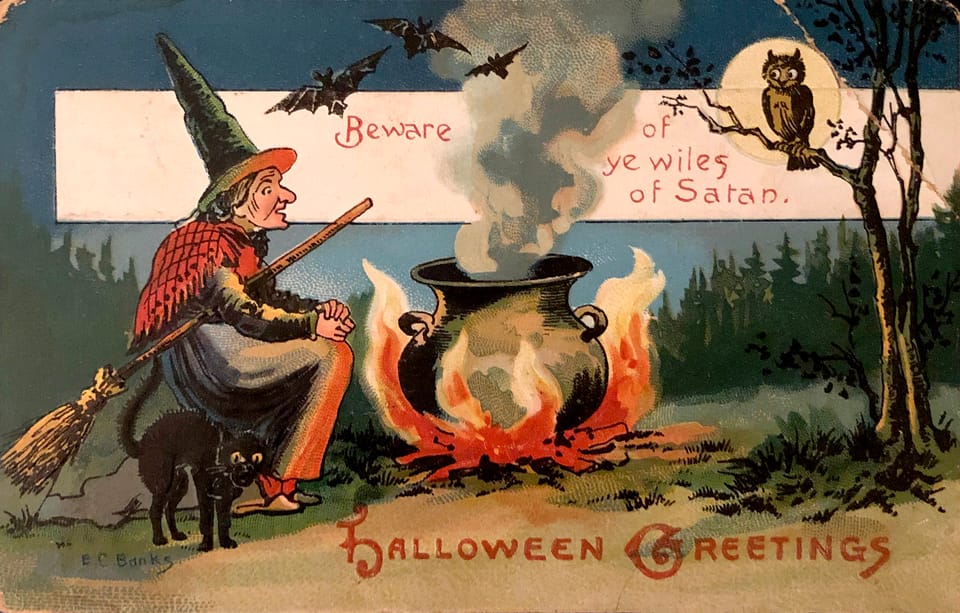
There's only [Silver Shamrock Mask Company voice] two more days 'til Halloween, and if you've got a free evening and a tolerance for fear between now and the big day, it might be time to cozy up with something scaaaaaaaary. But what to watch/read/play/do that you haven't watched/read/played/done a million times already? Episodes' staff has you covered! We've put together a list of our favorite under-the-radar pieces of Halloween and horror culture, ranging from a 19th century short story with still-sharp teeth to questions you can ask your friends around a crackling bonfire. Check it out below the fold... if you dare.
And tell us what under-the-radar scares you're enjoying this spooky season in the comments! Remember, only paid subscribers can comment. Become a paid subscriber by clicking the button below!
Watch
Butterfly Kisses (dir. Erik Kristopher Myers, 2018, streaming on Prime Video and other platforms): Contrary to what some people are about to tell you, I am not a pure found-footage horror fan. What fascinates me about it is often my filmmaker side more than my critic side. I'm always all in on an enterprising director or producer using limitations as a strength, and found-footage films often show that off – sometimes for the better; often for the worse.
However, it's really hard to do something genuinely new in the space, which is why I'm so into Erik Kristopher Myers's film Butterfly Kisses, which is somehow both a "traditional" found-footage feature and a mockumentary about found-footage horror that is constantly critiquing itself. It follows a wedding videographer who happens upon some seriously scary tapes made by a student filmmaker 11 years prior, then blows up his life to prove that the tapes are real and he's not just another would-be indie filmmaker using found-footage aesthetics to get his foot in the door. And all the while, the film crew making a mockumentary about the videographer wonders just how far to take their portrayal of a subject who seems to be unraveling on camera.
If that all sounds too heady, Butterfly Kisses also has a very fun and original urban legend monster and one of the better setups for a horror sequel I've seen in a second. If you must watch one recent found-footage horror film, make it this one! –Emily St. James
Ghostwatch (dir. Lesley Manning, 1992, streaming on Shudder): I'm not as bullish on straight-up found footage films as Emily is, but I'm a total sucker for at least one subgenre of the category: the fake documentary. And for my money, there's no horror pseudo-doc in the English language scarier than Ghostwatch.
A BBC production that aired on Halloween, thus fooling many viewers at the time into thinking it was real, Ghostwatch follows a single mom and her daughters, who claim their rowhouse in a working-class London suburb is haunted by a poltergeist. There's plenty in the film to critique with a bit of distance: The ending goes so ham as to break the film's carefully-crafted verisimilitude, and it has just enough transmisogyny to keep you from forgetting it's a British production. But holy cow, Ghostwatch has the ability to just get you in the moment in a way very few other horror films do.
I think its power comes from some combination of its skillful use of ambiguity, its slippery and overlapping explanations for what's happening on-screen, and the care the actual BBC presenters on screen put into their temporary roles as actors. And while this is orthogonal to the film's scares, it certainly doesn't hurt that it also functions as a subtle but effective critique of the way paranormal-investigation shows so often make a spectacle of the working class. For the full effect, watch this one on a random weeknight right after the evening news.— Lily Osler
The Innocents (dir. Jack Clayton, 1961, streaming [probably dubiously] on YouTube): The thing about horror filmmaking is that it's iterative. Somebody does a thing, and then other people iterate and build upon that thing, and then still other people build and iterate upon that. A corollary to this is that the further you get from the moment a film first played in theaters, the harder it is to understand just what was so scary about it. Your mind will have been polluted by all the stuff that built atop the original in ways ever more efficiently scary. You can read about how, like, people freaked the fuck out when the Phantom was unmasked in the 1925 Phantom of the Opera, but unless you are 110 years old and have a living memory of seeing it in theaters, it probably won't scare you too badly.
Now, there are plenty of movies made before my time that still retain a power to scare me, but perhaps none surprises me so much as Jack Clayton's properly buttoned-down British ghost story The Innocents. An adaptation of Henry James's The Turn of the Screw (also great), the story follows a governess who finds herself in charge of some messed up little kids in Victorian England. Slowly but surely, she unravels a tale filled with dread and odd longing, one that can only culminate in some deeply terrifying moments. There are scenes in this movie that just get to me, even though nothing overtly scary is happening. A vivid reminder that sometimes less is more! –ESJ
The Lure (dir. Agnieszka Smoczyńska, 2015, streaming on HBO Max): If you were friendly with me in the early 2020s and/or followed me on social media at the time, let me apologize for just how evangelical I was about this movie. I bet it was annoying! That said, I think I did kind of have a point; there's no other movie out there quite like The Lure, a Polish mermaid/vampire horror musical romantic bildungsroman that manages to transcend its thicket of adjectives through the sheer intensity and immediacy of its emotions.
It's a retelling of The Little Mermaid (the Hans Christian Anderson one, not the Ariel Needs Legs one) set in late Communist Poland, where two sirens named Golden and Silver come ashore and join a sleazy band to try and learn about humans and their ways. Golden is committed to staying a siren — a creature that, in Smoczyńska's retelling, must eat the hearts of human men to stay alive — while Silver is enamored with a shithead bassist who offers her the possibility of living as a human forever. It's about queerness and womanhood and female solidarity and patriarchy and the fraught power fantasy of monstrosity and (likely accidentally) transness (no spoilers, but, uh, Silver has an interesting way of trying to become human); the performances are killer, the songs will get stuck in your head, and there's some truly gnarly imagery if you're here for the scares. I can't guarantee you'll become a Lure sicko like me if you watch it, but there's a higher chance than you might think. It has a way of making evangelists. — LO
Pontypool (dir. Bruce McDonald, 2008, streaming on Shudder): Another of my favorite horror tropes is the infohazard: a fact or concept or image or song that carries a curse with it. It's a potent metaphor for the way every one of us is shaped by the information environments we live within (just ask any pundit whose rightward shift over the past few years has been facilitated by staying on X, the Everything App), and it often leads to really compelling psychological horror in which the scares come from the unreliability of memory, thought, and personality.
I'll spare you my rant on my actual favorite infohazard horror media (Infinite Jest, no I am not kidding, sorry) and will instead give my enthusiastic imprimatur to Pontypool, a Canadian indie film in which an Art Bell-type conspiracy radio host slowly realizes that there's a brain-destroying virus embedded in the English language itself. Pontypool makes amazing use of its very constrained location as the host holes up in his studio, always showing us just enough of what's happening in the outside world to keep things terrifying without wrecking the immersion or the budget, all of which makes complete sense when you realize that the film started life as a radio play. Another legacy of its origins as language without image: Pontypool is unusually clear-eyed about the psychology of the infohazard's victims, showing us clearly the abject pain of being severed from communication and, thus, connection. — LO
Become a paid subscriber: You'll get access to two weekly newsletters only paid subscribers receive, the Episodes Discord, and almost a decade of archives. Sign up for as little as $5/month below!
Listen
Otherworld (hosted by Jack Wagner, available on all podcast platforms): I am a podcast agnostic. However, based on the highest of recommendations, I recently started listening to Otherworld, which focuses on people's personal encounters with the paranormal, and it’s really struck a chord with me. At its heart, Otherworld is a storytelling podcast. Host Jack Wagner is only occasionally in conversation with the interview subjects, whose stories largely unfold in their own time, in their own fashion. Otherworld takes these individuals and their tales seriously, not in a “This is real and we have uncovered the TRUTH” kind of way, but in affording each guest the dignity of an open mind. Otherworld lives in a space that acknowledges that the breadth of the world and universe is vast, far beyond human understanding, and each person’s lived experience is their own.
What Otherworld most reminds me of is my favorite annual installment of Coast to Coast AM. Each Halloween in an episode called "Ghost to Ghost" (natch), host Art Bell would feature open lines in which listeners could call in and tell their own spooky stories of the unknown. And while Otherworld offers a little (a lot) more investigation and vetting, the storytelling appeal remains the same.
If you’re looking for an eerie, but chill, good time Otherworld is for you. Here’s a few places to start: Episode 118, "Lucy and Lauren," is truly gut-wrenching. Episode 138, "Zaza," is a Ouija board story that really got under my skin. Episode 127, "The Cattle Farm Creature," was definitely not what I was expecting and featured a storyteller who really amused me. Finally, episode 129, "The Kitchen Gnome," made me rage with an absolutely asinine decision the protagonist made in the middle. –Libby Hill
Read
The Blight Harbor trilogy (Lora Senf, 2022-2024): Middle-grade horror is tough to find. All of it is either trying way too hard to be super scary or not trying hard enough. And the number of books that somehow manage to tell a good story in the midst of that is very small. Locking into something that will be authentically creepy to tweens while also maintaining enough interest for their read-aloud parents is evidently super difficult. Thank goodness, then, for Lora Senf's Blight Harbor trilogy, The Clackity (2022), The Nighthouse Keeper (2023), and The Loneliest Place (2024). Senf's hero is Evie, a young girl whose parents died in a mysterious housefire, who now lives with her kooky, witchy aunt in a small town in Washington that is haunted by all manner of ghosts. Things take a turn for the worse when Evie follows her aunt into a terrifying, abandoned abattoir and encounters a malevolent, toothy spirit named The Clackity, who quickly transports her to another realm to match wits with a long-dead serial killer. And that's just the first book! Senf's got a real grasp for how to give young readers more meat on the bone than the typical horror tales aimed at their age, and the trilogy goes to some unexpectedly dark and poignant places, as Senf uses her horrors to suggest the ways we all begin to realize we are responsible for other people as we grow. Also, like, this is primarily going to work as scare fodder for kids, but there are some seriously unsettling moments in these books that got to even me. For whatever that's worth. –ESJ
Dark Harvest (Norman Partridge, 2006): Few American authors have been as effective at capturing "spooky Halloween" – which I broadly define as the Halloween of mid-20th century American Midwestern small towns, as immortalized forever in cardboard cutout classroom decorations – as Ray Bradbury, and even fewer authors have been able to do effective Bradbury pastiche. Perhaps no one has managed so well as Norman Partridge, whose novella Dark Harvest takes a Bradburyian small town setting, then adds a horrible pumpkin god straight out of Stephen King. Partridge taps into the way that teenagers often begin to realize the sheer, arbitrary rules of their communities, then weds that idea to some wonderfully autumnal image and some great, creepy moments. It's the kind of book you can read in a chilly November weekend afternoon. (For another spin on some of these themes, try Thomas Tryon's Harvest Home, which has a final twist I adore.) –ESJ
"Laura Silver Bell" (Joseph Sheridan Le Fanu, 1872): One horror story area that not enough writers are exploring is fairy horror. For a quick read in that vein that will get under your skin, try this short story, in which an old witch in a county on the far edges of late 1800s Great Britain discovers that a local girl has attracted the attention of a fairy lord, then tries to stop what's coming. Le Fanu is a little scared of letting his reader just figure shit out – he writes in a dialect for most of the story, then drops it when he gets tired of doing so, which I find hilarious – but there are images in this story that truly capture the uncanny. Read it here or in the wonderful anthology Damnable Tales. –ESJ
White is for Witching (Helen Oyeyemi, 2009): My favorite Oyeyemi novel, one of my favorite novels, full stop, and the book I wish people would read instead of (sigh) her arguably kinda transphobic 2014 novel Boy, Snow, Bird. For one thing, White is for Witching is Oyeyemi operating at full symbolic and linguistic intensity in a way that few of her other novels can match; it's a book that manages to be purposely ambiguous and completely clear in its themes at the same time. On the most basic level, it's about Miranda Silver, the female-line scion of an old and very conservative English family whose penchant for eating chalk is only the outward manifestation of a haunting that threatens to consume everything about her. On another level, it's a novel about the xenophobic rot underlying the morals and values of England's wealthy elites, a theme that has sadly only become more relevant in the 16 years since Oyeyemi put pen to page. It will leave you disturbed in more ways than one. — LO
The Wikipedia page for the Lead Masks Case: I am a connoisseur of scary Wikipedia pages with more than two decades of experience in the field, dating all the way back to Bush-era nights in front of my family's eMac reading barely-sourced articles about Australian alien abductions, so trust me when I say: The page on the Lead Masks Case has the juice. It's short, dense with disturbing details ("There were no signs of major trauma or any evidence of a struggle," anyone?), so full of evocative and unnerving imagery (the suits!) that I've considered teaching it to undergrads, and, contra this old XKCD strip, somehow more unsettling for how seemingly explicable it is. Find a cathode ray monitor, camp out in a basement somewhere, and make sure to click through at the bottom to Wikipedia's list of unsolved deaths for a long and sleepless night. — LO
Play
The Excavation of Hob's Barrow (Cloak and Dagger Games, 2022): The graphic, point-and-click adventure game should be fertile ground for folk horror, what with the subgenre's focus on going to a new, strange place and slowly trying to figure out what's up with all these weird customs. What is The Secret of Monkey Island but a comedic riff on The Wicker Man with pirates? (Okay, it's really not that much like that, but go with me here.) One of the few games to dive right in there is The Excavation of Hob's Barrows, in which a young woman travels to the hinterlands of rural England in the early 20th century to search for a mysterious, hidden grave, that she might do a little archeological surveying on it. Would you believe the locals have some odd beliefs about the world? And that they increasingly seem just a little menacing? And that nothing is as it seems? And that there's a creepy cat who seems to be spying on you? All of this and more can be yours in The Excavation of Hob's Barrow! –ESJ
Interact with other people
Asking your friends for terrifying legends from their families: This is vague, but if you take any of my suggestions on this list, I do hope it's this one. More of your friends than I think you'll assume will have family stories they've become desensitized to over the years but that can still manage to scare the absolute shit out of other people. Last year at MFA retreat, a good friend of mine very casually explained to the rest of our cohort that, back in the 19th century, one of her ancestors had known someone who'd died by suicide after seeing a goat stand on its hind legs and speak in the voice of a man. She said this like it was a normal thing! Almost everyone has something like this in their family; all you've gotta do is ask. — LO
Under the Autumn Strangely (Graham Gentz, 2023): If you prefer to talk with your friends via a series of game-like prompts – and who doesn't? – may I recommend Graham Gentz's lovely autumnal pastoral game Under the Autumn Strangely, which draws inspiration from weird Halloween postcards and programs like Over the Garden Wall. In it, you and two other friends tell a story about a traveler who finds themselves in an unusual world where something uncanny or even horrific is happening. The game's tone is elastic enough to allow for everything from mildly creepy to deeply terrifying, and depending on the table, you could even end up with a great mix of elements. The game is probably best played with experienced tabletop role players, but if you've got a couple of friends and a long Halloween night, there are few better ways to spend it. Get it here. –ESJ
A Good Song
The free edition of Episodes, which (usually) covers classic TV and film, is published every other Wednesday, and the subscriber-supported edition of Episodes, which covers more recent stuff, is published every Friday. Paid subscribers also have access to the weekly Monday Rundown. Our editor-in-chief is Emily St. James, and our managing editor is Lily Osler. If you have suggested topics, please reply to the email version of this newsletter or comment (if you are a paid subscriber).

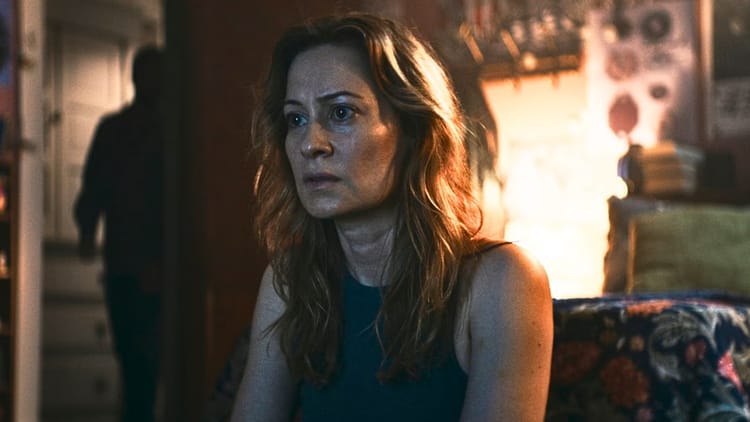
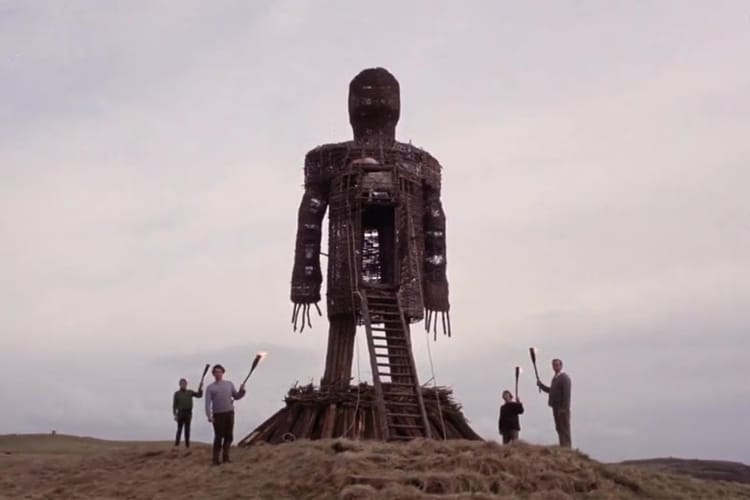
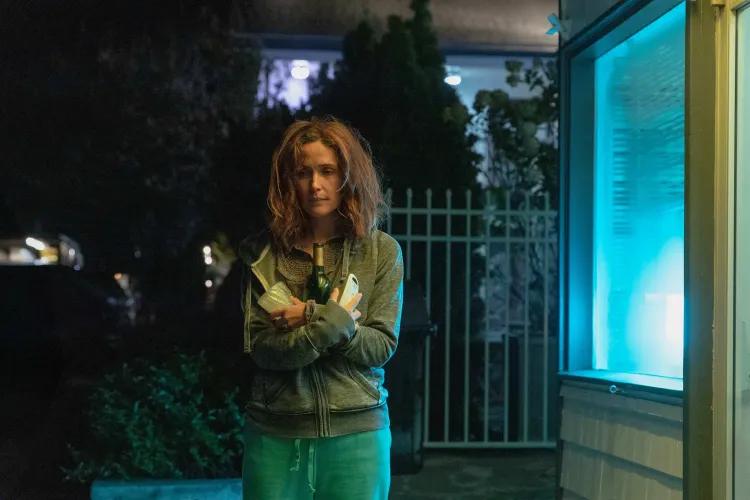
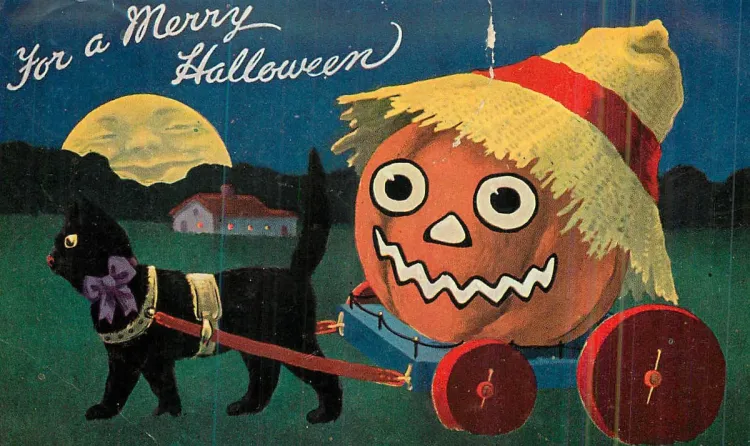
Member discussion